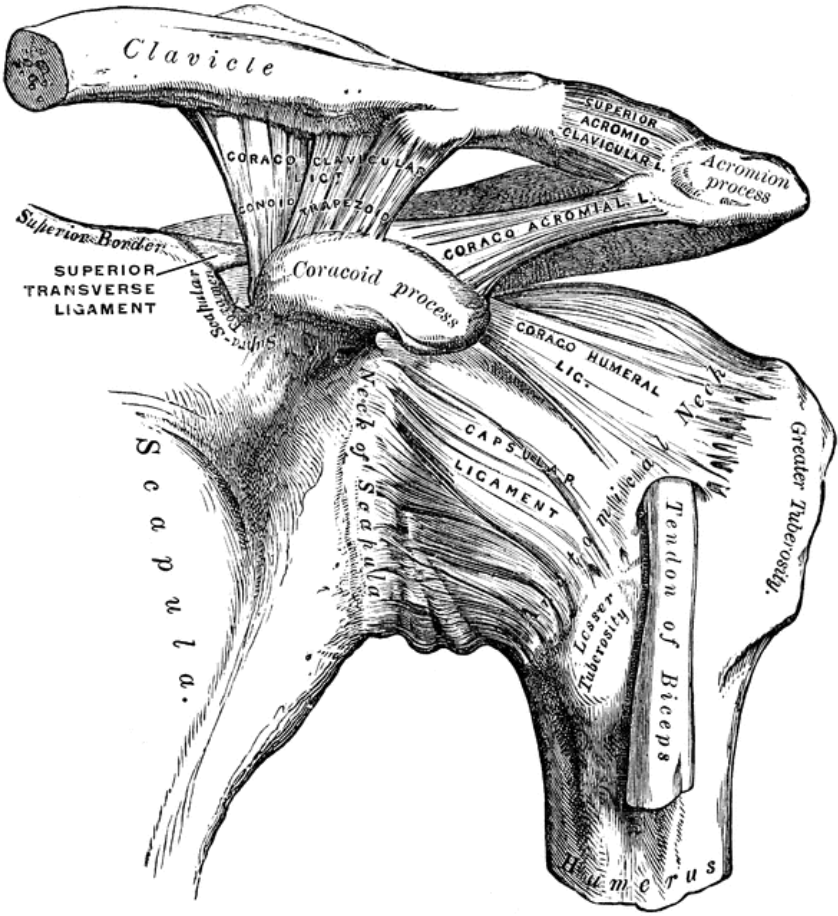Subacromial impingement
What is subacromial impingement?
The muscle/tendons of the rotator cuff pass under the acromion, or “roof” of the shoulder, and over the glenoid and the head of the humerus. The space through which they pass (between the humeral head and the bottom of the acromion) is called the “subacromial space”. If this space is too narrow, the rotator cuff tendons rub against the acromion, or can become pinched between the bones. This rubbing/pinching action is called impingement. In severe cases this action can cause the rotator cuff tendons to fray progressively until they tear completely (see Rotator cuff tears). Unfortunately, this syndrome is a vicious cycle – the more the tendons rub, the more they become inflamed, narrowing the subacromial space and causing more rubbing.. and so on.
What causes it?
When you raise your arms, the rotator cuff tendons automatically touch the acromion, so some contact is normal and will not cause pain. However, if you do lots of overhead work, or take part regularly in throwing and racquet sports or swimming, this impingement action can inflame and damage the rotator cuff tendons. Osteoarthritis in the AC joint can cause protrusions of bone or spurs on the acromion which can rub on the rotator cuff. There can also be congenital causes of subacromial impingement: some patients are born with an abnormally shaped or tilted acromion which reduces the size of the subacromial space causing impingement.
How does it feel?
The main symptom is pain, or a pinching sensation, in the upper and outer shoulder, which increases when you raise your arm above your head. The pain can stop you sleeping, particularly if you roll onto the damaged shoulder. You will feel a sharp pain if you try to reach your hand into your back pocket. Depending on how serious the damage to the rotator cuff is, you may feel weakness in the arm, and in severe cases be unable to raise it.
Diagnosis
Your doctor will ask you about your medical history and make a physical examination. He will perform various muscle strength tests and may inject a painkiller into the subacromial space to see how this affects your pain. Your doctor may prescribe X-rays to check if there are bone spurs on the acromion or if there are calcium deposits, or he may ask for an MRI scan to ascertain the scale of the damage to the rotator cuff tendons.
Treatment – conservative
This condition can often be treated non-surgically. Your doctor will prescribe anti-inflammatory pain killers, rest and sometimes cortisone injections. He may also prescribe a short course of shock wave treatment (normally 3 treatments), followed by physiotherapy exercises to re-establish the correct balance of the muscles.
Treatment – surgical
Arthroscopic subacromial decompression: your surgeon will make 2 or 3 small incisions around the shoulder through which he will insert a fibre-optic camera and the surgical instruments he needs. The surgeon will shave a piece of bone from the underside of the acromion (if there is osteoarthritis, he will also take off a piece of the clavicle), removing any bone spurs, thus enlarging the subacromial space. Then he will repair any damage or tears to the rotator cuff.
Rehabilitation after surgery
You will need to keep the operated arm in a sling for 7 days after the operation, and ice-packs may help control the pain and any swelling. Physiotherapy will start immediately to get the shoulder moving again, and then gradually move onto stretching and strengthening exercises.
It is vital after any treatment for impingement syndrome to strengthen the rotator cuff muscles, improving their co-ordination, in order to avoid recurrence of the problem.
When will I be back to normal?
Although patients often see great improvements within a few days of surgery, it will take several months before you get completely back to normal. You should be able to go back to office work after 2-3 days and manual work after 45 days. You can normally start driving again after a week, and take part in non-contact sports after a month. Contact sports can be resumed after 2-3 months.
